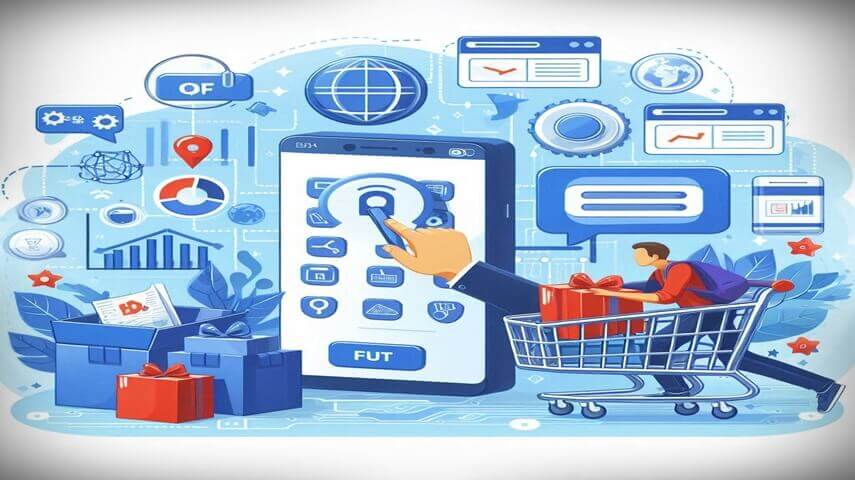Any successful marketing effort is built on a well-planned marketing strategy. More than half of the brands either do not have a clear digital marketing strategy or have not yet implemented one. A digital marketing strategy is essential because it provides direction, outlines your goals, and outlines the steps you must take to get there.
You can create effective digital marketing strategy for your company by combining the right digital business techniques. This article will go over the key elements of a successful digital marketing strategy.
Creating a Digital Marketing Strategy
Your digital marketing strategy provides a high-level overview of the factors that influence resources, actions, and goals. It must include the specific steps you will take to put that strategy into action. Digital media generates leads, converts consumers, and raises brand awareness by informing, entertaining, and persuading people. The plan allows a business to take advantage of the numerous online contact points that may be available.
Because developing a digital marketing strategy can be complicated, it is best to consult with a marketing agency, such as GoSocial Social Media & Digital Marketing Agency, or any other organization that operates locally in your area. However, if you want to work independently, here are some steps to take when developing a digital strategy.
- Develop a buyer persona. A buyer persona is a description of the ideal customer. Buyer personas provide crucial psychological and demographic information that can be used to recognize, comprehend, and interact with your target market.
- Identify Your Goals: Your marketing plan should have goals that are in line with those of your business, help you establish your brand, and generate high-quality leads.
- Pick the Right Tools: Once you’ve decided on your goals, make sure you have the right tools to measure their achievement. Online resources such as social media schedulers offer analytics that can be utilized to track the preferences of your audience.
- Select the Right Platforms: Gather your resources from all of your media kinds and decide which platform will produce the best results.
Key Elements
Critical components of a customer-driven marketing plan should be streamlined to effectively communicate your brand message. Most digital marketing components work best when combined with some or all of the other components. Some of the essential components of any marketing strategy are:
Responsive Web Design
Because your website is the first place potential buyers will go to learn more about your company, it is the cornerstone of any marketing campaign. To increase engagement, your website should follow best practices such as being responsive, mobile-friendly, and easy to use, with clear call to actions.
Your website should also include a blog that publishes interesting, relevant, and informative content on a regular basis. This will not only increase website traffic and help convert those visitors into customers, but it will also help your brand establish itself as a thought leader in its field and boost Search Engine Optimization (SEO). Even better, the blog content can be repurposed across multiple marketing channels.
SEO Strategy
SEO, or search engine optimization, is the process of enhancing your website with certain keywords so that both it and the web pages that make up it rank higher in search results.
The likelihood that a potential customer will interact with your brand can be increased with a well-thought-out SEO approach. Here are a few SEO smart practices:
- Web page optimized for mobile
- Including pertinent keywords after performing keyword research.
- Having various backlinks
- Enhancing voice searches
- Improving the website’s user interface
- Using local listings and landing pages to focus on local searches
Social Media Marketing
Social media can be used by brands to increase two-way connections with followers and advertise goods and services. A successful social media strategy provides numerous benefits, including increased brand recognition, business visibility, and website traffic.
When developing your strategy, make sure to include best practices for social media. These include selecting the best social media platforms for your target audience, posting at the best times for the most engagement, sticking to a consistent posting schedule, and constantly tweaking your strategy in response to results over time.
Advertising Campaigns
Digital advertising can be divided into four basic categories:
- Search/Pay-Per-Click (PPC)
- Display
- Social Media
- Retargeting Advertisements
It is a substantially less expensive alternative to traditional advertising that tracks your audience in real-time utilizing consumer data to comprehend customer demographics, interests, and activities. Any firm may use digital advertising as a dynamic and quantifiable tool to boost product sales, generate high-quality leads, and raise brand awareness.
Content Marketing
Content marketing is the deliberate use of written articles, infographics, videos, and other creative content to achieve organizational goals. A content marketing specialist assesses the target audience to determine which type of content will most effectively deliver the desired message.
In addition to creating blog posts, bite-sized videos, podcasts, and other assets, digital content marketers must become proficient in publishing and distribution. Although lead generation and customer conversion are key performance indicators (KPIs) that measure the success of content marketing, content goals are typically focused on brand awareness.
Email Marketing
To expand your business, you must prioritize email marketing. Email marketing helps with all aspects of marketing, from generating leads to retaining them and increasing sales. It is also a quick and inexpensive way to engage customers and achieve company goals.
Email marketing is an effective strategy for cultivating leads and attracting them to your products and services. To generate relevant traffic and leads, the first step would be to focus on the buyer persona and send them a targeted message that is personalized and properly optimized for multiple devices.
In conclusion
Life cycle marketing is built on engagement between a brand and a customer at every stage of the relationship. It takes into account the psychological and rational influences on the buyer’s purchase decisions. Many businesses use conventional market research techniques to collect this information. To develop client personas, evaluate the market, comprehend corporate positioning, and acquire other important data, research is required.




